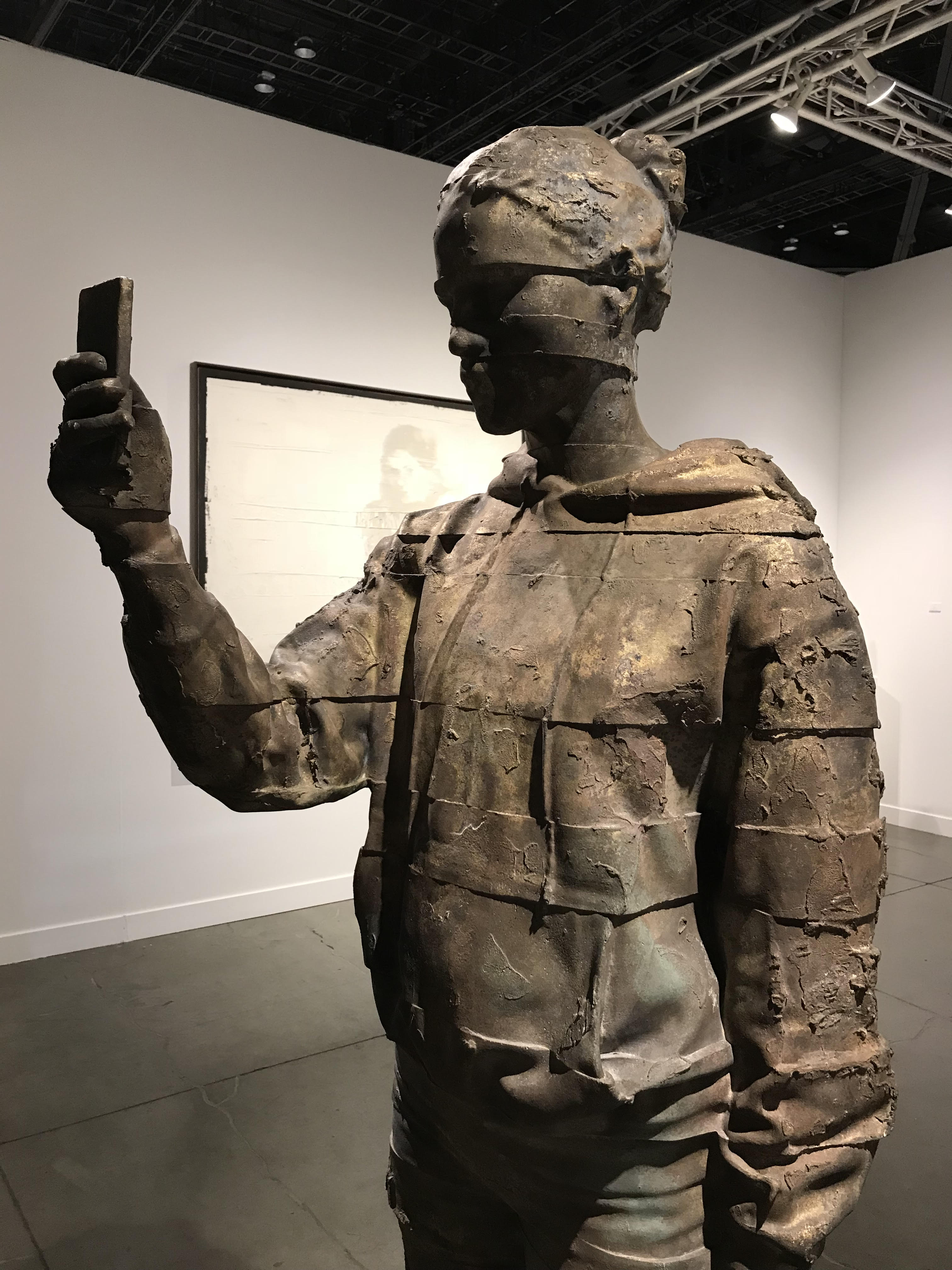
I have never been a fan of figurative work, especially contemporary sculptures that attempt to accurately and precisely depict the human body. Sculptures like this have been made throughout history to pass on important stories, immortalize heroes of the day and memorialize historical events.
They are often used at war memorials. Today there is little need for this because we have new technologies that serve those purposes and, quite frankly, do a better job at them. Contemporary sculpture can’t rely on nostalgia and needs to carve out a new future and seek out new purposes and territory. However, the work shown here by artist Andy Denzler, which appeared in the 2018 Seattle Art Fair, may be an exception.
Over 62% of the world’s population has cell phones, a figure expected to reach 67% by 2019. This statistic is commonly referred to in the cell phone business as market penetration. In the United States more than 94% of people have cell phones. The average person checks their cell phone over a 150 times a day and 90% of text messages are read within three minutes of the being sent. 40% of people check their cell phone while they are using the toilet, and 20% of users ages 18-34 have used their cell phone during sex.
68% of cell phone users sleep with their phone under their pillow or next to their bed. The average person spends roughly 16 hours a day with their phone — they have become our best friends.
This sculpture is life sized, and as you approach it, the figure is so perfectly rendered and assumes such a ubiquitous pose that it is easy to mistake it momentarily as a fellow human being. Taken in a historical context — sculpture as cultural and historic documentation – this work has a haunting quality and message. Like a frog being boiled in a pot of water, it is difficult to stop and consider the impact this object is having on our lives. This art work’s commitment and strength forces one to stop and consider the significance of the cellphone, our relationship to that technology and how it is transforming our world and interactions with one another. If this sculpture were discovered 1,000 years from now would it be considered a masterwork that defines the age we live in?
